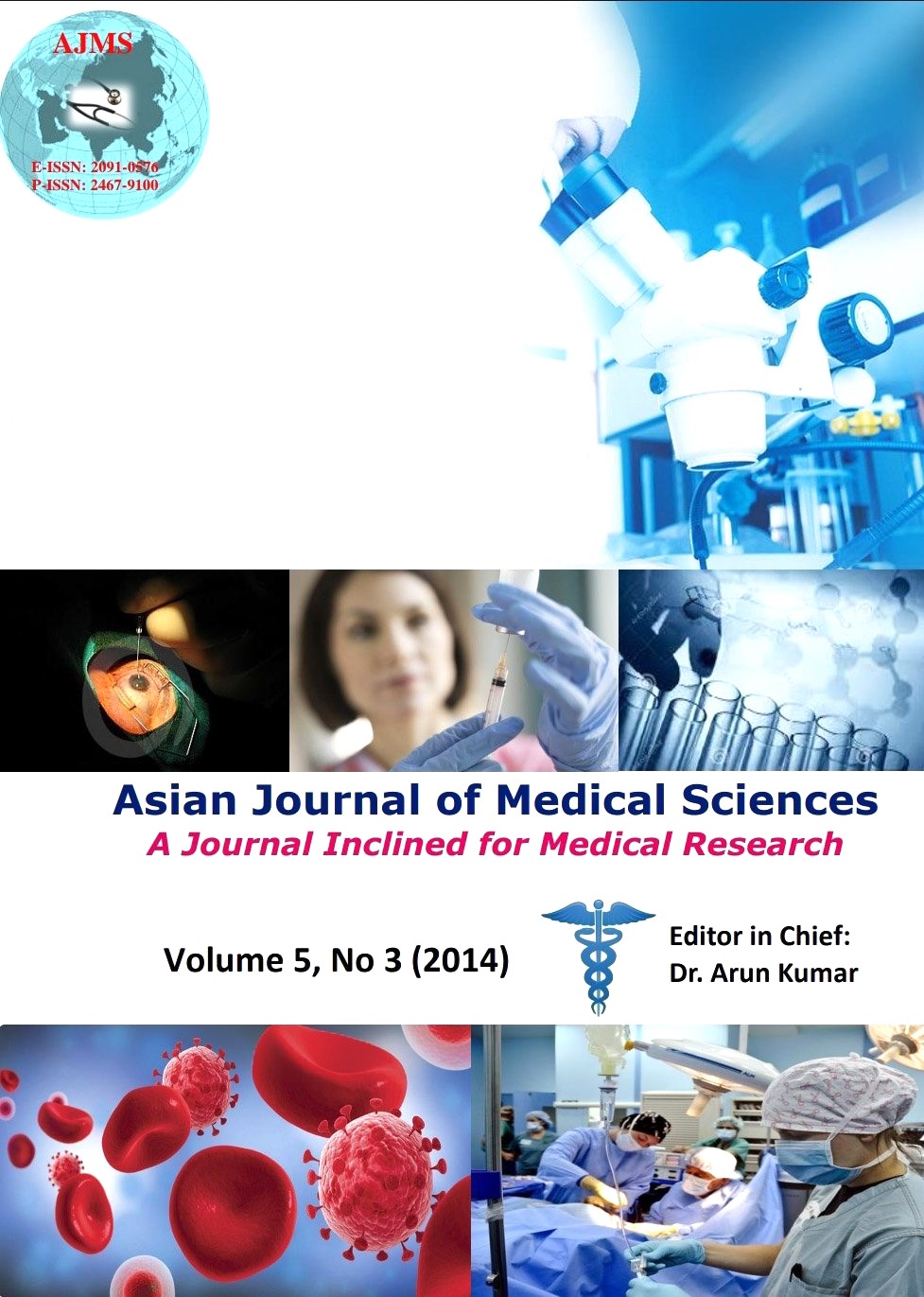Molecular detection of the Hepatitis C virus genotypes circulating among both sexes of Khyber Pakhtunkhwa, Pakistan
Keywords:
Hepatitis C virus, Genotypes, Chi-square testAbstract
Background: Hepatitis C Virus (HCV) is the major cause of viral hepatitis. A few studies revealed that HCV genotypes; 3a, 3b, 1a and 1b are the most common genotypes found in the general population of Khyber Pakhtunkhwa.
Aims and Objective: The current is designed to find out the prevalence of HCV genotypes among both sexes of Khyber Pakhtunkhwa.
Study Methods: The present study was carried out in various area of Khyber Pakhtunkhwa during the period of July, 2012 to July, 2013. All the HCV positive samples were genotyped. The statistical analysis of the data was done by using Statistix 9.0 software.
Result: The results showed that the male, 53.1% (n=340) were more infected as to female, 46.8% (n=300). The overall result shows that in male patients; the high number of cases (216) was reported of 3a whereas the lowest cases (8) were reported of 1b. The mixed genotype is recorded in 8 patients. In female patients; the 3a is detected in 170 patients whereas the lowest cases of genotype (3b) are reported in 5 patients. In female patients; the mixed genotype is reported in 11 patients.
Conclusion: From the present study, it was concluded that the male were more infected as compare to female and the genotype 3a was the most common genotype in both sexes.
Asian Journal of Medical Science, Volume-5(3) 2014: 72-76
Downloads
Downloads
Published
How to Cite
Issue
Section
License
Authors who publish with this journal agree to the following terms:
- The journal holds copyright and publishes the work under a Creative Commons CC-BY-NC license that permits use, distribution and reprduction in any medium, provided the original work is properly cited and is not used for commercial purposes. The journal should be recognised as the original publisher of this work.
- Authors are able to enter into separate, additional contractual arrangements for the non-exclusive distribution of the journal's published version of the work (e.g., post it to an institutional repository or publish it in a book), with an acknowledgement of its initial publication in this journal.
- Authors are permitted and encouraged to post their work online (e.g., in institutional repositories or on their website) prior to and during the submission process, as it can lead to productive exchanges, as well as earlier and greater citation of published work (See The Effect of Open Access).




